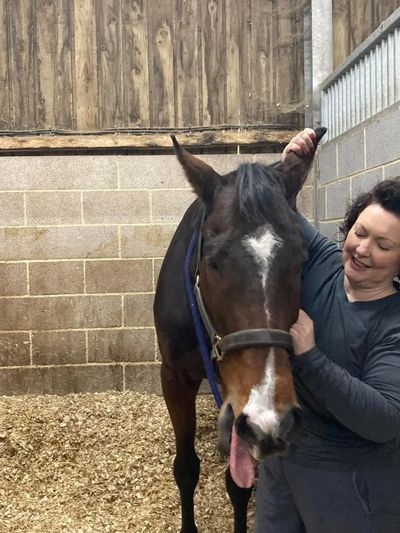What is Equine Sports Massage Therapy?

There is so much more to massage therapy. In a few words …..
Massage therapy is the manual manipulation of soft body tissues including muscles, tendons, ligaments and connective tissues by using recognised techniques. It is a complementary therapy which improves general wellbeing and can be used for maintenance and enhanced performance as it increases circulation and improves mobility and flexibility.
For century’s, massage therapy has assisted in promoting good muscle health. Not only is Massage physically beneficial in so many ways, but it also improves your horse’s mental well-being. You don’t need to wait until you have a problem to utilise a massage therapist, regular maintenance acts as a preventative measure, addressing minor problems and / or soreness before they become a larger issue or injury.
Unless there are specific contraindications (more about that later), all equines can benefit from equine sports massage. Whether that is an equine competing at the highest level, or a retired equine out at grass.
A therapist can feel tension and muscle soreness before the owner / rider is fully aware. This can bring healing and relief to these areas, assisting the body to heal itself.
However, a consultation encompasses much more than just an massage therapy session. Initially we will discuss you and your horse‘s history. What your concerns are (if any?) and what you hope to achieve. Following this I will then conduct a detailed static and dynamic assessment of your horse and his gaits; a check of your saddle to ensure it is in good order; a check of the fit of both your saddle and your bridle. And once this has been completed I will begin a massage treatment tailored to your horse and incorporating passive stretches.
As the treatment progresses I will be identifying and treating any trigger points, areas of soreness or muscle spasm.
At conclusion of the treatment I will work out with you a tailored exercise plan and / or show you specific stretches that you can carry out on your own in order to capitalise and prolong the benefits of the treatment.
So where did equine massage all begin?
Like many of today’s alternative treatments, animal massage has its roots in ancient practice. Early Egyptian hieroglyphics show what appear to be animal healers using massage for treatment. Although the first known documentation of massage was back in 2700BC in China.
Massage techniques continued to develop throughout history and are mentioned in the early writing of the Greeks, Romans, Egyptians, Turks and Persians as well as Japanese. We know early Egyptian hieroglyphics depicted “animal healers” using massage techniques. Whilst horse massage was practiced in ancient China and Rome It was Flavius Arrianus, a philosopher and administrator under the reign of Roman Emperor Hadrian who recommended a full-body massage for dogs and horses.
He stated it would
• “knit and strengthen the limbs,
• make the hair soft and its hue glossy and
• cleanse the impurities of the skin.”
It is documented that Julius Caesar travelled with his personal massotherapist who also worked on Caesar’s dogs.
Jean-Pierre Hourdebaigt, well known author of Equine Massage: A Practical Guide, notes horse massage was practiced in ancient China and Rome and more recently by the Hopi Indians of the American Southwest. For centuries horses have been ‘curried’, ‘brushed’ and ‘rubbed down’ as part of routine care. I recall many years ago making a ‘wisp’ out of twisted and plated straw to ‘strap’ or ‘bang’ my pony. The method was to slap the horse’s muscles with the wisp with the idea that the horse would anticipate being lightly ‘banged’ with the wisp and would tense his muscles in anticipation. Starting lightly with just 4 or 5 bangs of the wisp and gradually building up to firmer ‘bangs’ in greater numbers as the horse grew accustomed to the action. The aim was to assist with muscle tone and relaxation (if the horse was happy with the idea and not all horses were!) as well as bringing grease to the surface of the coat and hence cleaning and polishing the coat.
In terms of animal massage, although people had been performing some form of massage on animals throughout history, modern massage was not used primarily for horses until the late 20th century.
In the history of horse-racing, equine massage has been an integral part of caring for valuable animals. In the 1970s the U.S. Equestrian Team formalised their use of massage, no longer referring to it as a "rub down" but calling it therapy. Jack Meagher, who coined the term "sports massage" for both humans and horses, began working with racing and show horses, including the U.S. Three Day Event Team and the Olympic Team in the 1970’s. He was also the author of “Beating Muscle Injuries in Horses”.
An inspirational Equine Sports massage therapist called Don Doran learnt the basics of the healing art of massage whilst he was serving as a marine corp in Japan in the early 70’s. He was inspired by trainers of great horses such as: Secretariat, Seattle Slew, Affirmed, Alydar, Shuvee, Ruffian and Forego.
